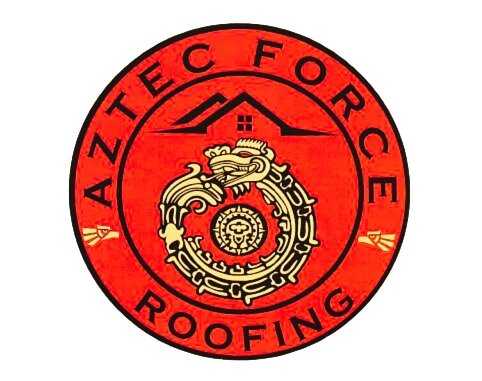Tile roofing is a durable and aesthetically appealing roofing solution that has been used for centuries. Made from materials such as clay, concrete, or slate, tile roofing offers superior longevity, energy efficiency, and weather resistance. Whether you’re looking for a classic Mediterranean style or a modern aesthetic, tile roofing is a popular choice for homeowners seeking both functionality and elegance.
Benefits of Tile Roofing
Tile roofing offers a range of benefits, making it a preferred option for many homeowners. Here are some key advantages:
1. Longevity
Tile roofing can last for 50 to 100 years, making it one of the most durable roofing materials available. Unlike asphalt shingles, which need replacement every 20-30 years, tile roofs provide a long-term solution.
2. Weather Resistance
Tiles are highly resistant to extreme weather conditions, including high winds, heavy rain, hail, and even fire. They provide excellent protection for homes in areas prone to severe weather.
3. Energy Efficiency
Tile roofs help regulate indoor temperatures by reflecting sunlight and providing natural ventilation. This reduces the need for excessive air conditioning, making your home more energy-efficient.
4. Low Maintenance
Unlike other roofing materials, tile roofing requires minimal maintenance. Routine inspections and occasional cleanings are usually sufficient to keep the roof in excellent condition.
5. Aesthetic Appeal
Tile roofing adds a unique and timeless look to any home. It is available in various colors, shapes, and styles, allowing homeowners to customize their roofs to match their architectural preferences.
Types of Tile Roofing
There are several types of tile roofing, each with unique characteristics. Understanding these options can help homeowners choose the best fit for their homes.
1. Clay Tile Roofing
Clay tiles are among the oldest roofing materials and are known for their natural appearance and durability. They come in various styles, including Spanish, Mission, and interlocking tiles.
2. Concrete Tile Roofing
An inexpensive substitute for clay tiles is concrete. They are highly durable and available in a wide range of colors and textures, mimicking the appearance of wood, stone, or clay.
3. Slate Tile Roofing
Slate tiles are made from natural stone and offer exceptional durability and elegance. They are resistant to fire, mold, and extreme weather conditions but tend to be heavier than other tile options.
4. Metal Tile Roofing
Metal tiles are a lightweight and modern alternative to traditional clay or concrete tiles. They offer the same aesthetic appeal with added benefits such as rust resistance and ease of installation.
Tile Roofing Installation Process
Installing a tile roof requires careful planning and expertise. Here’s an overview of the installation process:
1. Roof Inspection and Preparation
Before installing tile roofing, the existing roof must be inspected to ensure it can support the weight of the tiles. If necessary, additional structural reinforcement is added.
2. Underlayment Installation
A high-quality underlayment is installed as a moisture barrier to protect the roof deck from water damage.
3. Battens and Tile Placement
Battens (wooden or metal strips) are installed to secure the tiles in place. Tiles are then carefully arranged in an overlapping pattern to ensure proper water drainage.
4. Securing the Tiles
Tiles are fastened using nails or adhesive, depending on the type of roofing material and local building codes.
5. Final Inspection and Cleanup
Once the installation is complete, a final inspection is conducted to ensure the roof meets quality and safety standards.
Maintenance Tips for Tile Roofing
To maximize the lifespan of your tile roof, follow these maintenance tips:
- Regular Inspections: Conduct biannual roof inspections to identify and address minor issues before they escalate.
- Clean Debris: Remove leaves, moss, and dirt to prevent blockages and maintain drainage efficiency.
- Repair Cracks Promptly: If a tile cracks or breaks, replace it immediately to prevent water infiltration.
- Hire Professionals: For major repairs or cleaning, consult a professional roofing contractor to avoid damage.
Conclusion
Tile roofing is a long-lasting, stylish, and energy-efficient roofing solution that offers numerous benefits for homeowners. With various materials and styles available, it provides both durability and aesthetic appeal. If you’re considering installing or maintaining tile roofing, working with experts ensures optimal results. Aztec Force Roofing, LLC specializes in high-quality roofing solutions tailored to your needs.
FAQs
1. How long does tile roofing last?
Tile roofing can last between 50 and 100 years with proper maintenance, making it one of the most durable roofing options available.
2. Is tile roofing expensive?
Tile roofing has a higher upfront cost than asphalt shingles, but its longevity and low maintenance make it a cost-effective investment over time.
3. Can tile roofing withstand harsh weather conditions?
Yes, tile roofs are highly resistant to extreme weather, including heavy rain, high winds, hail, and fire.
4. Is tile roofing suitable for all homes?
Tile roofing is heavier than other materials, so a home’s structure must be evaluated to ensure it can support the weight before installation.
5. How do I maintain my tile roof?
Regular inspections, cleaning, and timely repairs help maintain the durability and performance of tile roofing over time.
